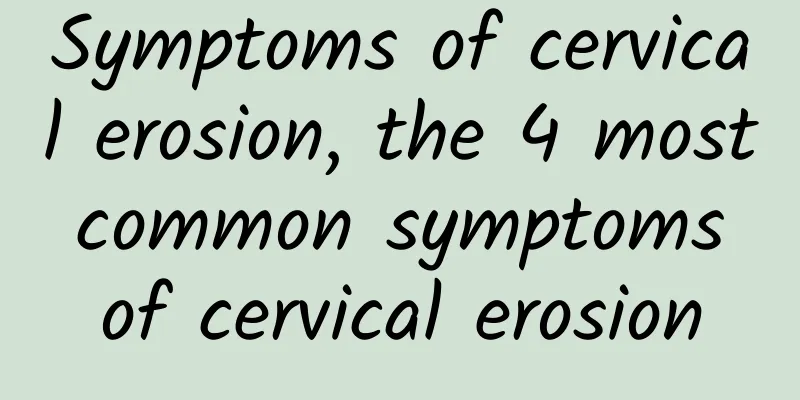Symptoms of cervical erosion, the 4 most common symptoms of cervical erosion

|
Cervical erosion is a common gynecological disease. Some women suffer from this disease but are unaware of it because they do not know the specific symptoms of this disease. So, what are the symptoms of cervical erosion? How to diagnose cervical erosion? 1. Symptoms of cervical erosion 2. Diagnosis of cervical erosion <br/>If a woman has the above symptoms, she should actively go to the hospital for examination and receive active symptomatic treatment after diagnosis. |
<<: What are the causes of cervical erosion? Five main causes of cervical erosion
Recommend
I was born with a hard time losing weight. I treated depression and lost 20 pounds in half a year.
Many women have tried all kinds of weight loss re...
Symptoms and characteristics of cervical erosion at different stages
Gynecological inflammation will continue to chang...
Can I go alone?
It is technically feasible for a person to go to ...
Overcome your weight loss plateau! Supplement protein in moderation
I believe that friends who have experience in wei...
Early symptoms of ectopic pregnancy in women
Ectopic pregnancy should be familiar to women. If...
What are the more effective tests for hyperprolactinemia?
Hyperprolactinemia refers to a syndrome caused by...
What are the symptoms of cervicitis in women? Patients with cervicitis should do these tests
Cervicitis is a common gynecological disease. So ...
Experts analyze the main causes of cervical hypertrophy
Cervical hypertrophy is a common gynecological di...
Solutions for excessive bleeding after medical abortion
If the fetal sac is seen to be expelled during th...
What are the causes of adenomyosis?
As a common gynecological disease, although adeno...
A brief discussion on the examination before medical abortion
Many female friends get pregnant unintentionally....
What to do if you have irregular menstruation due to anemia?
What to do if you have irregular menstruation due...
Want to drink winter melon soup during menstruation? Drink it properly to nourish your body
It is very important for women to pay attention t...
Will cervical warts heal on their own?
Research and surveys have shown that the chances ...
Experts explain the common causes of pelvic inflammatory disease
The cause of pelvic inflammatory disease is the f...









